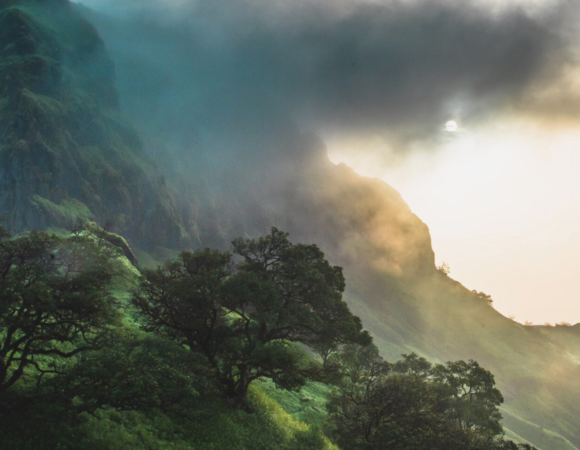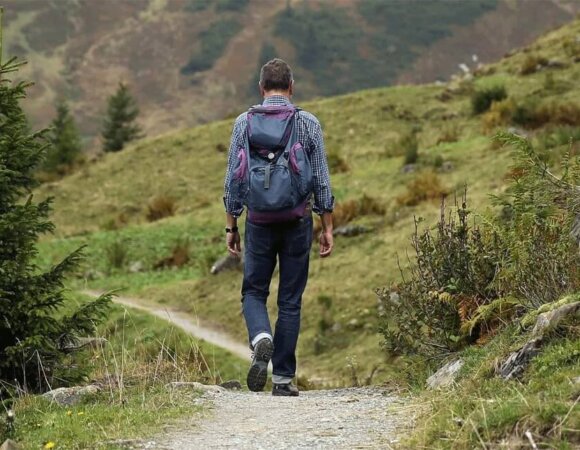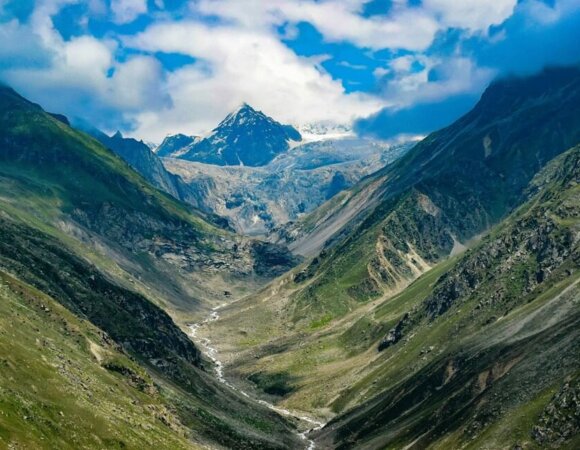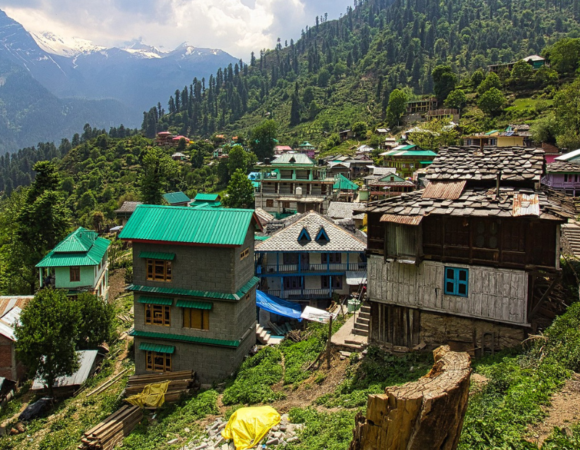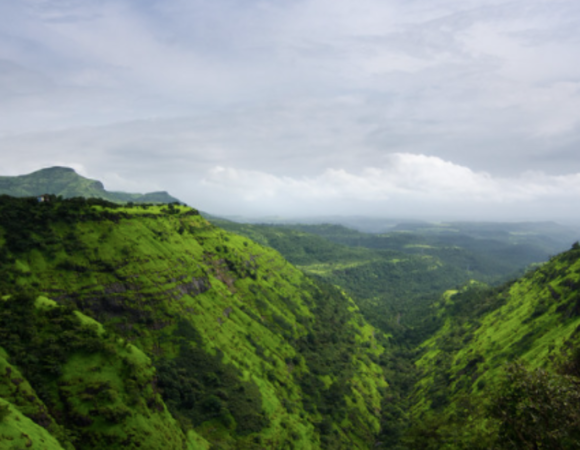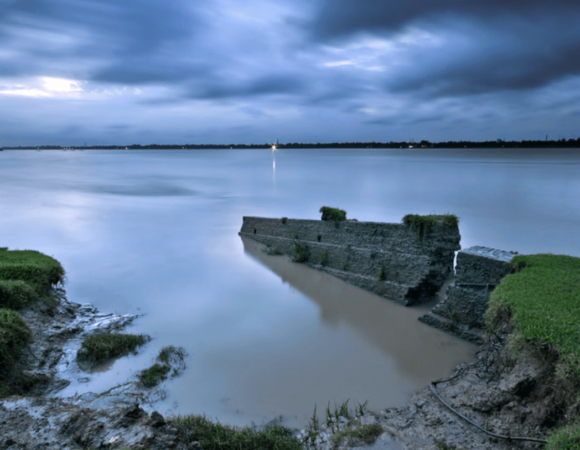Dr. Madhavi Latha: The Engineer Behind Chenab Bridge – Complete Travel Guide 2025
Madhavi Latha Chenab Bridge: The Woman Engineer Behind World’s Highest Railway Bridge – Complete Travel Guide 2025
Table of Contents
ToggleOn June 6, 2025, history was made when Prime Minister Narendra Modi inaugurated the world’s highest railway bridge over the Chenab River in Jammu and Kashmir. Standing majestically at 359 meters above the riverbed, this architectural marvel didn’t just connect two sides of a gorge – it connected dreams to reality, thanks largely to one extraordinary woman: Dr. G. Madhavi Latha.
The Woman Who Moved Mountains
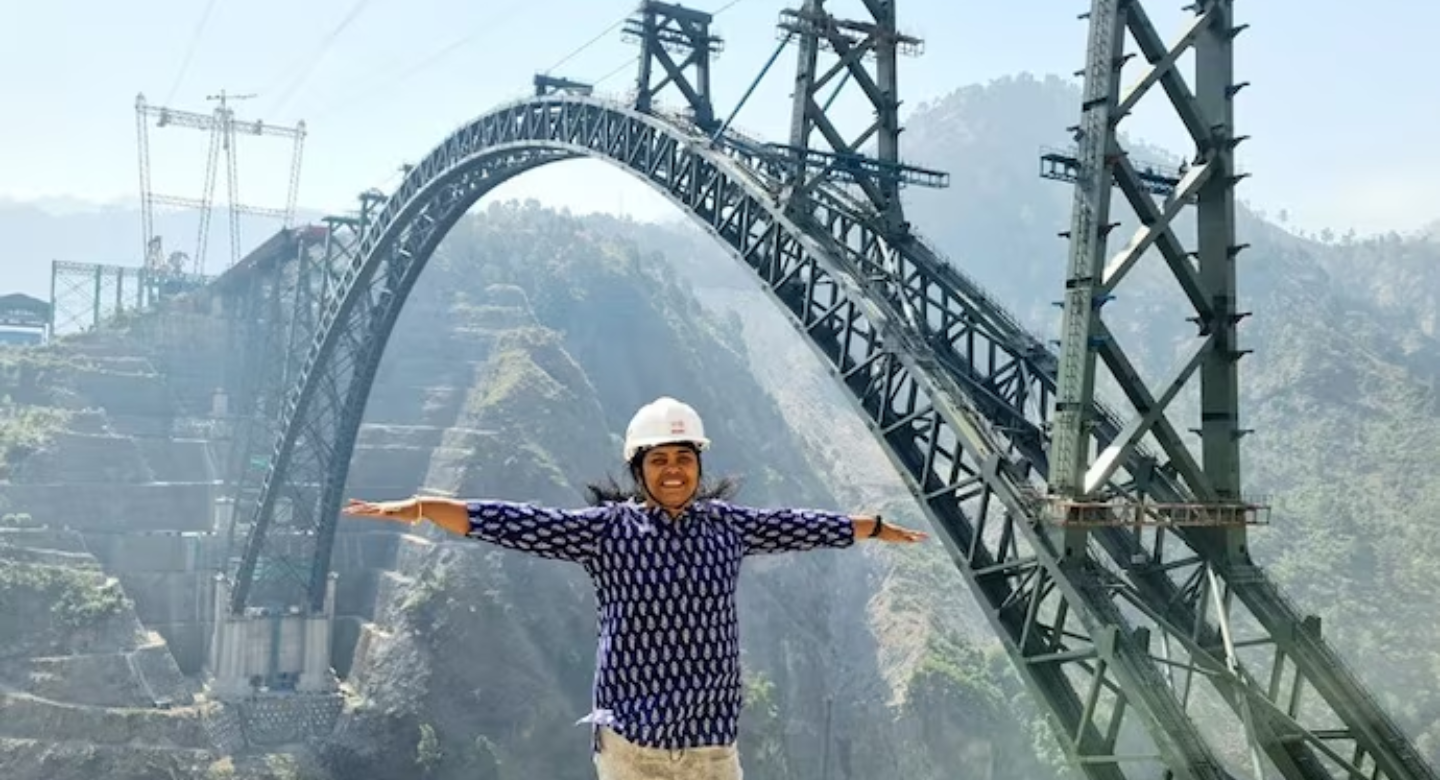
Dr. Madhavi Latha’s journey to engineering greatness began in humble surroundings in a small village in Andhra Pradesh. Today, she stands as a Professor at the prestigious Indian Institute of Science (IISc) in Bengaluru, specializing in geotechnical engineering and rock mechanics. But her most significant contribution to India’s infrastructure legacy spans an incredible 17 years of dedicated service to the Chenab Rail Bridge project.
Educational Excellence and Early Achievements
Dr. Latha’s academic journey is a testament to consistent excellence:
Academic Milestones:
- 1992: Completed BTech in Civil Engineering with distinction, laying the foundation for her engineering career. This undergraduate degree equipped her with fundamental knowledge of structural design, materials science, and construction principles that would prove invaluable in her later specialized work.
- MTech: National Institute of Technology, Warangal – graduated with Gold Medal in Geotechnical Engineering. This prestigious achievement demonstrated her exceptional understanding of soil mechanics, rock engineering, and foundation design, specializing in the very field that would define her career.
- 2000: Completed Doctorate (PhD) from IIT Madras in Geotechnical Engineering, focusing on advanced research in rock mechanics and soil behavior. Her doctoral work provided her with the deep theoretical knowledge and research methodology that enabled her to tackle unprecedented engineering challenges.
- Current Position: Professor at Indian Institute of Science, Bengaluru, where she continues to mentor the next generation of engineers while conducting cutting-edge research in geotechnical engineering and contributing to major infrastructure projects across India.
Recognition and Awards
Dr. Latha’s contributions to engineering have earned her numerous prestigious accolades:
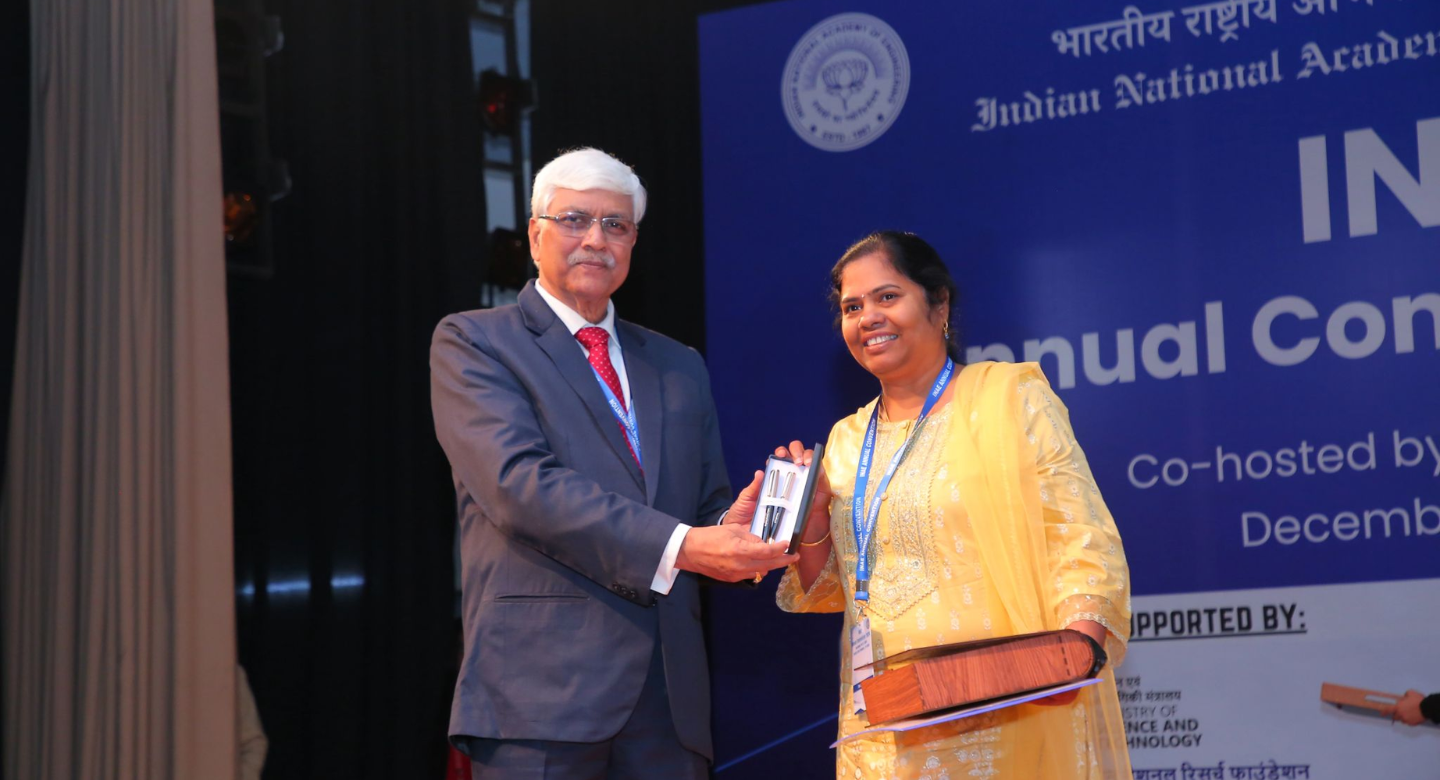
- 2021: Best Woman Geotechnical Researcher Award by the Indian Geotechnical Society – This honor recognized her outstanding contributions to advancing geotechnical engineering practices in India, particularly her innovative solutions for challenging terrains and her role in mentoring women engineers in the field.
- 2022: Named among India’s Top 75 Women in STEAM (Science, Technology, Engineering, Art, and Mathematics) – This national recognition celebrated her as one of India’s most influential women professionals, acknowledging her role in breaking gender barriers and inspiring countless young women to pursue careers in engineering.
- Multiple research publications and patents in geotechnical engineering – Her extensive body of work includes groundbreaking research papers on rock mechanics, foundation engineering, and seismic design, contributing significantly to the global knowledge base in geotechnical engineering.
- International recognition for innovative solutions in challenging terrain construction – Her work on the Chenab Bridge has gained international attention, with engineering communities worldwide studying her methodologies for future projects in difficult geographical conditions.
From Village Roots to Global Recognition
Dr. Latha’s story is one of breaking barriers at every step. In an era when women in engineering faced numerous challenges, she not only carved her path but also fought for basic facilities like separate toilets for women in engineering institutions. Her persistence in advocating for women’s rights in the workplace while simultaneously pursuing groundbreaking research shows the depth of her character and determination.
The Chenab Challenge: 17 Years in the Making
Understanding the Magnitude
The Chenab Rail Bridge isn’t just any ordinary bridge – it’s an engineering phenomenon that demanded solutions to problems never encountered before. Here’s what made this project extraordinarily challenging:
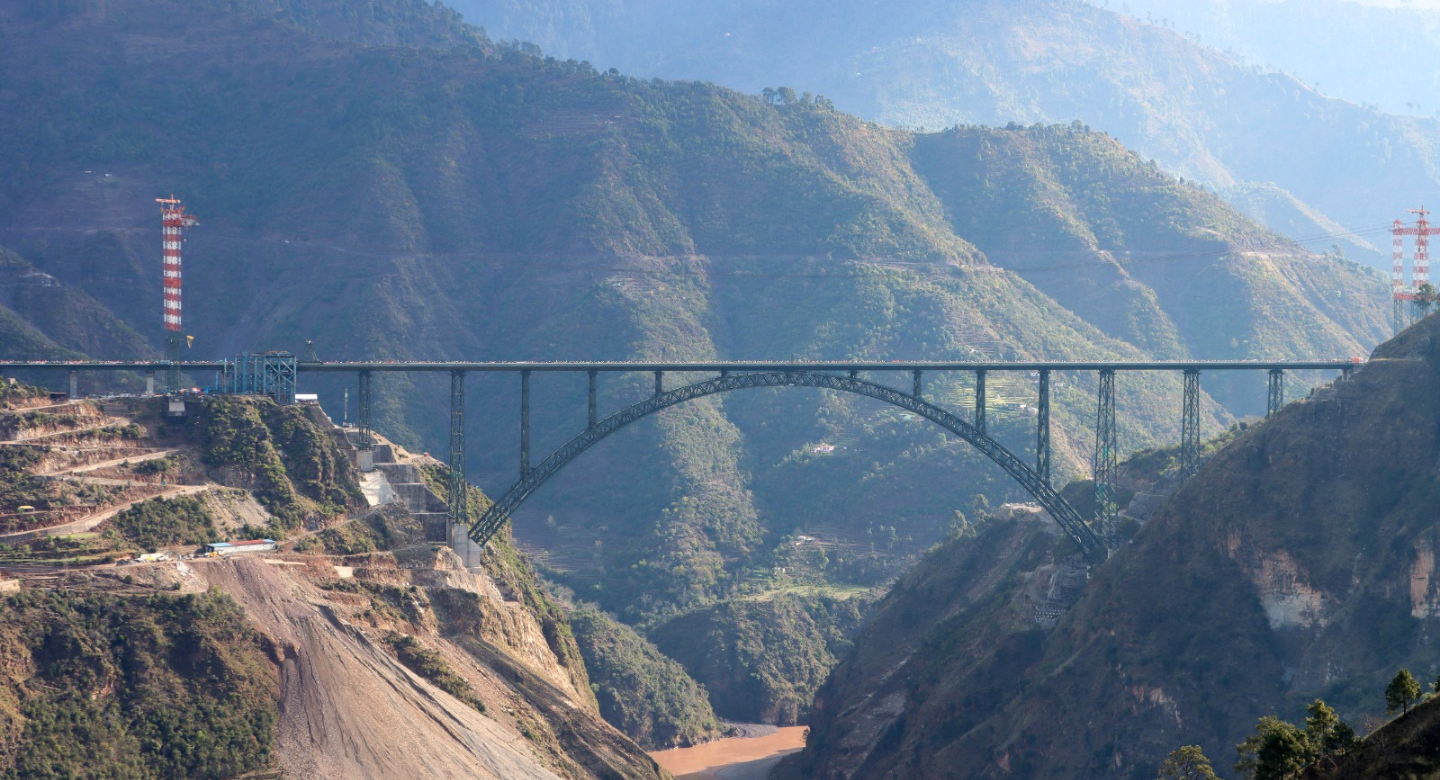
Physical Specifications:
- Height: 359 meters above the Chenab River (taller than the Eiffel Tower)
- Length: 1,315 meters total span
- Structure: Steel and concrete arch bridge with a 785-meter main arch
- Construction Cost: Over ₹1,400 crores
- Location: Between Kauri and Bakkal stations in Reasi district
- Inauguration: June 6, 2025, by Prime Minister Narendra Modi
Dr. Latha’s Critical Role and Innovative Approach
As the geotechnical consultant for the project, Dr. Latha faced unique challenges that had no existing blueprints or precedents. Working closely with AFCONS (the main contractor), she developed innovative solutions that made the impossible possible.
Her Revolutionary “Design-as-You-Go” Approach: Understanding that traditional engineering methods wouldn’t work for such unprecedented challenges, Dr. Latha’s team adopted a flexible, adaptive strategy. This groundbreaking methodology revolutionized how complex infrastructure projects are approached in challenging terrains. This meant:
- Real-time Innovation: Developing solutions based on actual geological conditions discovered during construction rather than relying solely on preliminary surveys. This approach allowed the team to address unexpected challenges as they arose, ensuring that the bridge design remained optimal throughout the construction process.
- Adaptive Problem-Solving: Modifying designs as new challenges emerged from the terrain, demonstrating remarkable flexibility in engineering practice. This meant constantly reassessing structural requirements, foundation designs, and safety parameters based on real-world conditions rather than theoretical models.
- Complex Calculations: Performing intricate engineering calculations to work around actual rock mass conditions, requiring advanced mathematical modeling and computer simulations. These calculations involved stress analysis, seismic modeling, and structural optimization to ensure the bridge could withstand all possible environmental and geological challenges.
Key Technical Contributions:
- Foundation Stability: Ensuring the bridge could withstand seismic activities in the earthquake-prone region by developing specialized foundation techniques that could absorb and dissipate seismic energy. This involved creating deep foundations that could anchor into stable rock formations while accommodating ground movement during earthquakes.
- Rock Analysis: Comprehensive study of fractured rocks, hidden cavities, and varying rock properties in the Himalayan formations. This extensive analysis required advanced geological surveys, core sampling, and laboratory testing to understand the complex rock structure and its behavior under different stress conditions.
- Anchor Design: Expert advice on the design and strategic placement of rock anchors to improve structural stability. These anchors, some extending deep into the mountain, provide additional support to prevent any structural movement and ensure the bridge remains stable under all conditions.
- Wind Resistance: Designing for extreme wind conditions at such heights, considering the unique aerodynamic challenges posed by the bridge’s massive structure in a mountainous environment. This involved wind tunnel testing, computational fluid dynamics analysis, and the development of specialized structural elements to minimize wind impact.
- Temperature Variations: Accounting for drastic temperature changes affecting metal expansion and contraction, developing expansion joints and flexible connections that allow the bridge to accommodate thermal movements without compromising structural integrity throughout the year.
Unique Geological Challenges Overcome:
- Fractured Rock Formations: Dealing with unstable and broken rock structures that could not support traditional foundation methods. Dr. Latha developed innovative techniques to reinforce these formations, including specialized grouting methods and rock bolting systems that essentially created artificial stability in naturally unstable terrain.
- Hidden Underground Cavities: Discovering and reinforcing unexpected hollow spaces beneath the proposed foundation areas. These cavities posed significant risks as they could cause sudden structural failure. Her team developed advanced detection methods and filling techniques to ensure complete structural integrity.
- Varying Rock Properties: Adapting to different rock strengths and compositions across the bridge span, requiring customized engineering solutions for each section. This meant designing foundations that could accommodate both hard granite sections and softer sedimentary layers while maintaining uniform structural performance.
- Remote Location Logistics: Managing construction in one of India’s most challenging terrains, where transporting materials and equipment required innovative solutions. The team had to develop specialized transportation methods and construction techniques suitable for the mountainous environment with limited accessibility.
The 17-Year Journey
What makes Dr. Latha’s contribution truly remarkable is her sustained commitment. While many consultants work on projects for months or a few years, she dedicated nearly two decades of her professional life to this single vision. Her work began in 2007, and through multiple design revisions, technical challenges, and problem-solving phases, she remained the consistent technical backbone of the project.
Engineering Marvel: Technical Achievements
Overcoming Natural Challenges
The Chenab gorge presented numerous engineering challenges:
Seismic Resistance: The region falls in a high seismic zone, requiring innovative foundation techniques that Dr. Latha helped develop.
Extreme Weather: The bridge had to withstand temperatures ranging from -40°C to 45°C, along with high-velocity winds.
Geological Complexity: The varying rock formations required detailed geological surveys and customized engineering solutions.
Safety First Approach
Dr. Latha’s team ensured the bridge could withstand:
- Earthquakes up to magnitude 8 on the Richter scale
- Wind speeds up to 260 km/hour
- Extreme temperature variations
- Heavy snowfall and ice formation
The Chenab Railway Experience: Your Journey Guide
Train Schedule and Timings
The Chenab Rail Bridge is part of the Udhampur-Srinagar-Baramulla Railway Link, a 272-kilometer engineering marvel that connects Kashmir with the rest of India.
Key Route Information:
- Total Journey Time: Reduced from 7 hours (by road) to approximately 3 hours (by train)
- Main Stations: Jammu → Udhampur → Reasi → Srinagar → Baramulla
- Bridge Location: Between Kauri and Bakkal stations
Vande Bharat Express Service Details: Starting from Saturday, June 7, 2025, two premium Vande Bharat Express trains now connect Srinagar with Katra:
Train Numbers and Operations:
- Train 26404/26403: Srinagar-Katra-Srinagar route
- Train 26401/26402: Srinagar-Katra-Srinagar route
- Operating Days: Six days a week (closed on Wednesdays)
- Timings: Daytime operations only due to security protocols
Station Stops: These semi-high-speed trains make limited stops at only four strategic stations:
- Jammu Tawi – Main railway junction serving as the primary connection point for trains from Delhi, Mumbai, and other major Indian cities. This station features modern amenities including waiting lounges, food courts, and comprehensive passenger facilities designed to handle the increased tourist traffic.
- Shri Mata Vaishno Devi Katra – Pilgrimage hub and the primary gateway for millions of devotees visiting the sacred Vaishno Devi Temple. The station includes specialized facilities for pilgrims, including baggage handling services, accommodation booking counters, and direct transportation links to the temple base camp.
- Banihal – Mountain gateway station marking the entrance to the Kashmir Valley, offering passengers their first glimpse of the dramatic landscape change from plains to high-altitude terrain. This station serves as a crucial intermediate stop for passengers traveling to various destinations within the Kashmir Valley.
- Srinagar – Kashmir’s summer capital and the final destination, featuring a modern railway terminal that showcases Kashmiri architecture and culture. The station provides direct access to Dal Lake, Mughal Gardens, and other major tourist attractions, with integrated transportation facilities for onward travel throughout the valley.
Important Travel Information:
- Security Measures: All passengers undergo comprehensive screening at Katra station, including thorough baggage checks, personal screening, and documentation verification. This multi-layered security protocol ensures passenger safety while maintaining efficient travel flow, with dedicated security personnel trained specifically for railway operations in sensitive areas.
- Connection Requirement: Currently, travelers going to Delhi or other parts of India must change trains at Katra station and undergo fresh security checks. This temporary arrangement ensures maximum security while the railway infrastructure is being fully integrated. Passengers are provided comfortable waiting areas and assistance during the transfer process.
- Future Plans: Direct train service between Jammu and Srinagar will commence in September 2025 after completion of Jammu railway station upgrades. These improvements include expanded platforms, enhanced security facilities, modern passenger amenities, and increased capacity to handle direct long-distance services.
- Luggage Policy: All baggage requires rescanning at Katra for onward journeys, with specialized equipment and trained personnel ensuring thorough but efficient processing. Passengers are advised to allow extra time for this process and pack essential items in easily accessible carry-on bags.
Tourist Destinations Along the Railway
The railway journey through the Chenab Bridge opens up incredible tourist opportunities:
Spiritual Destinations:
- Mata Vaishno Devi Temple (Katra): One of India’s most visited pilgrimage sites
- Amarnath Cave: Sacred pilgrimage destination (seasonal access)
Natural Wonders:
- Chenab Gorge Views: Breathtaking panoramic views from 359 meters above
- Himalayan Landscapes: Snow-capped peaks and verdant valleys
- Srinagar: The crown jewel of Kashmir with Dal Lake, Mughal Gardens
- Baramulla: Gateway to the stunning Gulmarg and Sonamarg hill stations
Historical and Cultural Sites:
- Bhimgarh Fort, Reasi: Ancient fort offering insights into regional history and stunning valley views. This historical monument, perched on a hilltop, provides visitors with panoramic views of the surrounding landscape and serves as a testament to the region’s rich cultural heritage. The fort features well-preserved architecture and informative displays about local history and the strategic importance of the region through various historical periods.
- Shiv Khori Cave Shrine: Sacred limestone cave temple dedicated to Lord Shiva, featuring natural formations that have attracted pilgrims for centuries. The cave extends deep into the mountain, with naturally formed stalactites and stalagmites creating an mystical atmosphere. Devotees believe the cave has religious significance, and the natural formations inside are considered divine manifestations.
- Patnitop Hill Station: Picturesque mountain resort perfect for nature lovers and adventure enthusiasts, situated at an altitude that offers cool climate throughout the year. This hill station features lush meadows, dense forests, and numerous trekking trails. Visitors can enjoy activities like nature walks, photography, camping, and during winter months, enjoy snow-based activities and scenic snow-covered landscapes.
- Sanasar Lake and Adventure Park: Scenic lake destination offering water sports, trekking, and paragliding opportunities in a pristine natural setting. The lake is surrounded by dense forests and meadows, making it an ideal spot for camping and nature photography. The adventure park provides professionally managed outdoor activities including rock climbing, rappelling, and guided nature trails, making it perfect for both families and adventure seekers.
Adventure Tourism:
- Photography: Spectacular views of the bridge and surrounding landscapes provide endless opportunities for both amateur and professional photographers. The journey offers dramatic shots of the bridge from various angles, breathtaking valley vistas, snow-capped mountain peaks, and unique architectural elements of the railway infrastructure. The changing light conditions throughout the day create different moods and perspectives, making each journey a unique photographic experience.
- Trekking Routes: Access to numerous Himalayan treks from various stations along the route, ranging from easy nature walks to challenging high-altitude expeditions. Local guides are available at most stations to lead visitors through well-marked trails that showcase the region’s diverse flora, fauna, and geological formations. Popular trekking destinations include ancient temples, hidden waterfalls, and scenic viewpoints that offer panoramic views of the Himalayan ranges.
- River Rafting: Chenab River adventures (seasonal availability) provide thrilling white-water rafting experiences for adventure enthusiasts. The river offers different grades of rapids suitable for beginners to experts, with professional guides and safety equipment provided. The rafting season typically runs from April to September, with the best conditions during summer months when water levels are optimal for safe navigation.
- Winter Sports: Skiing and snow activities in nearby hill stations during winter months transform the region into a winter wonderland. Popular destinations like Gulmarg and Pahalgam offer world-class skiing facilities, snowboarding opportunities, and traditional snow activities like sledding and snowman building. Professional ski instructors and equipment rental facilities are available for visitors of all skill levels.
Travel Tips for Bridge Enthusiasts
Best Viewing Points:
- Book window seats on the right side for optimal bridge views while traveling towards Srinagar
- The approach to the bridge offers stunning valley views
- Photography is allowed, but follow railway guidelines
Seasonal Considerations:
- Summer (April-September): Clear views, pleasant weather
- Winter (October-March): Snow-covered landscapes, potential weather delays
Impact Beyond Engineering
Economic Transformation
The Chenab Rail Bridge represents more than just a transportation link:
Regional Development:
- Boosted tourism industry in Jammu and Kashmir
- Enhanced trade and commerce opportunities
- Created thousands of employment opportunities
- Improved accessibility to remote areas
National Integration:
- Strengthened connectivity between Kashmir and mainland India
- Facilitated cultural and economic exchange
- Enhanced strategic importance of the region
Dr. Latha’s Legacy
Dr. Madhavi Latha’s contribution extends far beyond technical expertise:
Inspiring Future Engineers:
- Role model for women in engineering
- Demonstration of persistence and dedication
- Proof that Indian expertise can achieve global benchmarks
Technical Innovation:
- Advanced geotechnical engineering practices
- Innovative solutions for extreme terrain challenges
- Knowledge transfer to future infrastructure projects
Recognition and Honors
Following the bridge’s inauguration, Dr. Latha has received widespread recognition:
- Andhra Pradesh Chief Minister N. Chandrababu Naidu publicly congratulated her achievements
- Featured prominently in national media as the “brain behind the bridge”
- Recognition from the Indian engineering community
- Inspiration for young women engineers across the country
The Future of Indian Engineering
Dr. Madhavi Latha’s work on the Chenab Rail Bridge sets new standards for Indian engineering capabilities. Her 17-year dedication demonstrates that with expertise, persistence, and vision, Indian engineers can achieve global milestones.
Lessons for Aspiring Engineers
Key Takeaways from Dr. Latha’s Journey:
- Long-term Vision: Some projects require sustained commitment over decades
- Technical Excellence: Deep specialization in your field is crucial
- Problem-Solving Mindset: Every challenge has a solution waiting to be discovered
- Persistence: Never give up on seemingly impossible dreams
- Breaking Barriers: Gender and background should never limit aspirations
Planning Your Chenab Bridge Experience
Booking Information
Train Reservations:
- Book through IRCTC or railway booking counters
- Advance booking recommended, especially during peak season
- Special tourist packages available
Travel Packages:
- Combine railway journey with Kashmir tourism
- Multi-day packages including Srinagar, Gulmarg, and Pahalgam
- Photography tours focusing on the bridge and landscapes
What to Expect
The Journey Experience:
- Gradual ascent through mountainous terrain
- Multiple tunnels creating dramatic light-dark transitions
- Breathtaking moment crossing the Chenab gorge
- Panoramic views of the Himalayan landscape
Conclusion: A Bridge to the Future
The Chenab Rail Bridge stands as more than just an engineering achievement – it’s a testament to human determination, technical excellence, and the power of sustained effort. Dr. Madhavi Latha’s 17-year journey from conception to completion embodies the very spirit of modern India: ambitious, capable, and determined to achieve the impossible.
As trains now glide smoothly 359 meters above the roaring Chenab River, passengers experience not just a mode of transportation, but a journey through a dream made real by one woman’s unwavering dedication. Dr. Latha’s legacy will inspire generations of engineers to push boundaries, solve complex problems, and build bridges – both literal and metaphorical – that connect communities and fulfill dreams.
The next time you cross the Chenab Rail Bridge, remember Dr. Madhavi Latha – the woman who spent 17 years ensuring that this magnificent structure would stand tall, safe, and strong, connecting Kashmir’s beauty with the rest of India for generations to come.
Frequently Asked Questions (FAQs) About Dr. Madhavi Latha : The Engineer Behind Chenab Bridge – Complete Travel Guide 2025
Who is Dr. Madhavi Latha and what is her role in the Chenab Bridge project?
Dr. Madhavi Latha is a Professor at the Indian Institute of Science (IISc) Bengaluru, who served as the geotechnical consultant for the Chenab Rail Bridge for 17 years. She worked closely with AFCONS contractor from 2007 to 2025, developing innovative engineering solutions to overcome unprecedented geological challenges. Her expertise in rock mechanics and soil engineering was crucial in making this world’s highest railway bridge a reality.
What makes the Chenab Bridge special and why is it called the world’s highest railway bridge?
The Chenab Rail Bridge stands 359 meters (1,178 feet) above the Chenab River, making it taller than the Eiffel Tower and officially the world’s highest railway arch bridge. Built at a cost of over ₹1,400 crores, this 1,315-meter long bridge connects Kashmir with the rest of India and can withstand earthquakes up to magnitude 8 and wind speeds up to 260 km/hour.
How often do Vande Bharat trains run on the Chenab Bridge route?
Two Vande Bharat Express trains (26404/26403 and 26401/26402) operate on the Srinagar-Katra route six days a week, except Wednesdays. The trains started service from Saturday, June 7, 2025, and operate only during daytime hours due to security protocols. They stop at four stations: Jammu Tawi, Katra, Banihal, and Srinagar.
Do I need to change trains when traveling from Srinagar to Delhi or other cities?
Currently, yes. Passengers traveling from Srinagar to Delhi or other parts of India must change trains at Katra station and undergo fresh security screening and baggage rescanning. However, direct train service between Jammu and Srinagar will begin in September 2025 after the completion of Jammu railway station upgrades.
What tourist attractions can I visit along the Chenab Bridge railway route?
Major attractions include Vaishno Devi Temple in Katra, Bhimgarh Fort in Reasi, Shiv Khori Cave Shrine, Patnitop Hill Station, and Sanasar Lake Adventure Park. In Srinagar, you can visit Dal Lake, Mughal Gardens, and use it as a base to explore Gulmarg, Pahalgam, and Sonamarg hill stations.
What unique engineering challenges did Dr. Madhavi Latha overcome during construction?
Dr. Latha’s team faced fractured rock formations, hidden underground cavities, varying rock properties, and extreme weather conditions. She developed a revolutionary “design-as-you-go” approach that involved real-time innovation, adaptive problem-solving, and complex calculations based on actual geological conditions discovered during construction rather than relying solely on preliminary surveys.
How long does the train journey take and what can I expect during the ride?
The train journey from Katra to Srinagar takes approximately 3 hours, compared to 7 hours by road. Passengers experience breathtaking views while crossing 36 tunnels and 943 bridges, with the highlight being the spectacular 359-meter high crossing over the Chenab gorge offering panoramic views of the Himalayan landscape.
What security measures should I expect when traveling on this route?
All passengers undergo comprehensive screening at Katra station, including thorough baggage checks, personal screening, and documentation verification. The multi-layered security protocol includes dedicated security personnel trained specifically for railway operations. Trains operate only during daytime hours as an additional security measure.
When is the best time to travel on the Chenab Bridge for sightseeing?
Summer months (April-September) offer clear views and pleasant weather, making it ideal for photography and sightseeing. Winter months (October-March) provide snow-covered landscapes but may experience weather-related delays. Book window seats on the right side when traveling towards Srinagar for optimal bridge and valley views.
What awards and recognition has Dr. Madhavi Latha received for her work?
Dr. Latha received the Best Woman Geotechnical Researcher Award from the Indian Geotechnical Society in 2021 and was named among India’s Top 75 Women in STEAM in 2022. She has also gained international recognition for her innovative solutions in challenging terrain construction and has been publicly congratulated by Andhra Pradesh Chief Minister N. Chandrababu Naidu for her contributions to this national achievement.


